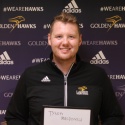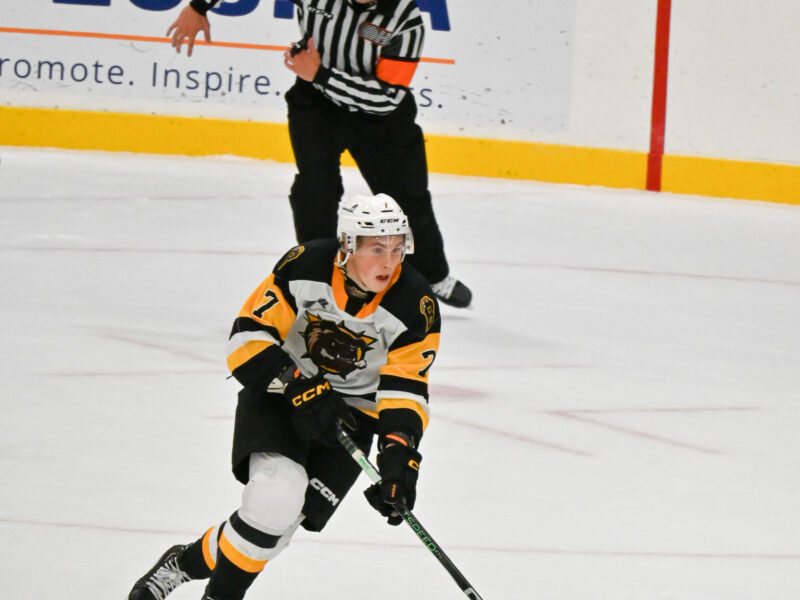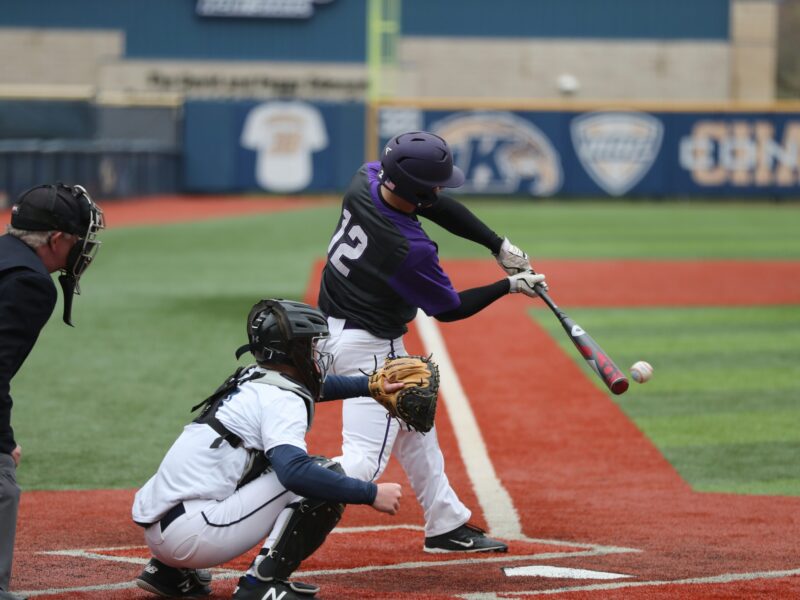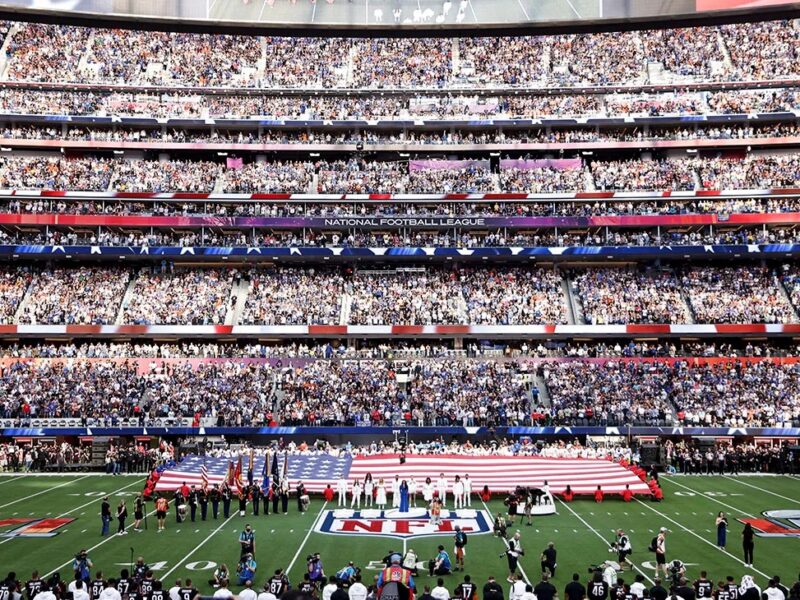23-year old Tyson MacDonald, a fourth-year Laurier student, has been representing the Golden Hawks swim team in Lima, Peru, for the Parapan American Games: an international competition held every four years, featuring over 1,850 athletes in 17 sports, and bringing together Paralympic athletes from all regions of the Americas.
From Aug. 25 to Aug. 31, MacDonald competed in a series of swimming events, and earned both a gold medal in the Men’s 100m Backstroke and bronze medal in the Men’s 200m Freestyle events.*
“The Pan Am Games are the major games that associate North, Central, South America and the Caribbeans. The ‘Para’ version is the games for people with, what would be previously or even currently labeled, ‘disabilities’,” said Matthew Pedersen, an associate coach for the Laurier swim team.
“In swimming we break it down into 14 classes, and then each class has a different level of challenge that the athletes have to work with and manage in order to compete and get through everyday life.”
MacDonald is considered an S14 classification of para-athlete: from 1-14, para-athletes are classes in categories based on the level of their physical, visual and hearing, or cognitive and intellectual impairments.
The International Paralympic Committee (IPC) has determined that S1-10 athletes indicate different intensities of physical impairment.
“[For athletes who are] 1-10, those are athletes that are struggling with limb challenges; if you’re a 1, you have very limited mobility or you’re missing most [of your limbs] — these are the quadriplegic types,” Pedersen said.
“As you get up to 10, you have more mobility, more functionality, less visually-obvious disabilities.”
For athletes who classify as S11-13, the three visual impairment classes range from very little or no visual ability, to compromised or less visual acuity, which can include loss of peripheral vision.
“The S14s — this is a relatively new category — these are the [athletes] that have the cognitive-intellectual [and] learning disabilities,” Pedersen said.
“The [most] obvious ones [in this category] are those people that are managing Down syndrome or [are on the] autism spectrum, but also reaches out to those who struggle with learning disabilities … These are the ones that have difficulty with pattern recognition, sequencing, and have slower reaction times due to [their cognitive impairment].”
For para-athletes, the difference between S1-13 and S14 classifications contrast significantly regarding the challenges faced on a competitive level, representing two opposite sets of difficulties.
“The 1-13s, these athletes are going to be struggling with just pure, physical approaches to things,” Pedersen said.
“I’ve worked with someone that was S9-S10, and these are people that have some limited mobility through the shoulders; one kid had an underdeveloped arm … he can’t use his right arm as well as a regularly-capable person would be able to use.”
“As you get into the 7s, 6s and 5s, you have [athletes] missing an arm, missing a foot. Those are very physically-specific classes, and they have to manage [their] performance that way,” he said.
For S14 athletes, the primary challenge is not in the realm of the physical so much as the mental.
“These are the [athletes] that, for all intents and purposes, you might call them ‘physically complete’ — they have the full musculature, they have the full skeleton, they have all the physical attributes you would expect in a regularly-capable person, [but] they are struggling with the cognitive side of things,” Pedersen said.
S14 athletes, for example, may not be as responsive to stimuli, such as the starting sound of the events. In these cases, one of the main challenges to overcome through the training process would be giving the athlete the tools they need to better respond to these situations.
“Some of the other ones … their struggles are more with exertion: that sequencing idea of, at this point I’m supposed to do this type of activity, or I’m supposed to put this much effort into it,” Pedersen said.”
Down syndrome was added as an S14 classification in the Parapan Am Games following a decision made by the IPC after the 2000 Summer Paralympics in an attempt to bring a more inclusive light to mainstream, competitive events.
“[It was] to give them more exposure, to show that they don’t struggle as much as we believe them to — they are perfectly capable of doing a lot of the things that you or I, or anyone else that is ‘normally capable’ is able to do: they just have to manage different struggles, different obstacles, than we do,” Pedersen said.
“But, with that, they are managing it and succeeding while managing those struggles. It’s cool, it’s fun, to give these groups of people the venue and the forum to show off.”
Para-athletes across the province, especially in swimming, are quite rare in the OUA. Because of this, they often swim in the general category, as opposed to the para-category.
“I don’t think that’s an exclusionary tactic, there’s just not enough to have separate scored events — yet — because there’s still some stigmas about getting kids at a younger age into athletics with different difficulties or challenges that they have to manage,” Pedersen said.
MacDonald as an athlete, competing at an international level, is quite significant, statistically speaking.
“At Laurier, our swim team [is] roughly 20 members, [and] we have had as many as two para-classified athletes — but usually, it’s one at a time.”
And, as a para-athlete, MacDonald has faced his own set of unique challenges and obstacles, related to his classification, that he has overcome to compete on a national level.
However, Laurier Athletics, and Laurier as an institution, has helped to bridge that gap, providing the opportunities and tools needed to thrive and challenge those obstacles.
“When it comes to performance, for the S14s, it’s more about understanding pacing and where they are in the pool and just some of the spatial awareness things, and having an understanding of when and how to properly exert to get optimal performance,” Pedersen said.
“I’ve had a chance to know [MacDonald] since he came to Laurier and as he’s grown through those first two years, just as a member of the general swimming population, and now since gearing him towards some of this para success. It’s been fun, it’s been good, I’m glad he’s having success. There’s been a lot of learning.”
MacDonald has been training for the Parapan Am Games for quite some time. Next, he the swim team coaches will be working towards his trials in April for the Paralympic games in Tokyo, next summer.
*This article reflects MacDonald’s competitive progress as of the date of this article’s publishing
**This article was originally published in The Cord




